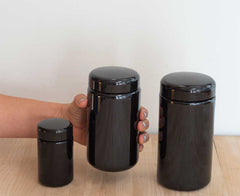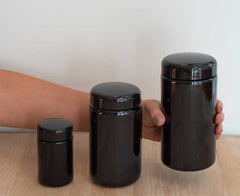Research Database
The only comprehensive database for clinical and medical research papers on the healthy benefits of matcha/green tea.
Explore Research Topic

Cognitive Function
Matcha consumption leads to much higher intake of green tea phytochemicals compared to regular green tea. Previous research on caffeine, L-theanine, and epigallocatechin gallate (EGCG) repeatedly demonstrated benefits on cognitive performance.
Learn More
Heart Health
According to Harvard Medical School, “lowering your risk of cardiovascular disease may be as easy as drinking green tea. Studies suggest this light, aromatic tea may lower LDL cholesterol and triglycerides, which may be responsible for the tea's association with reduced risk of death from heart disease and stroke.”
Learn More
Mental Health
Matcha contains an amino acid called L-theanine, which has been shown to reduce physiological and psychological stresses. L-theanine also improves cognition and mood in a synergistic manner with caffeine, and promotes alpha wave production in the brain
Learn More
Cancer Prevention
Matcha/green tea has for many centuries been regarded as an essential part of good health in Japan and China. Many believe it can help reduce the risk of cancer, and a growing body of evidence backs this up.
Learn More
Immunity
A recent study in the journal Proceedings of the National Academy of Sciences concluded that drinking matcha daily greatly enhanced the overall response of the immune system. The exceedingly high levels of antioxidants in matcha mainly take the form of polyphenols, catechins, and flavonoids, each of which aids the body’s defense in its daily struggles against free radicals that come from the pollution in your air, water and foods.
Learn MoreMost Recent Research Articles
Authors: Afsaneh Noormandi and Fatemeh Dabaghzadeh
Escherichia coli is the most common cause of urinary tract infections. The development of antibiotic resistance in E. coli is an important problem. Finding alternative antimicrobial agents from plant extracts has received growing interest. Camellia sinensis is a safe, nontoxic, cheap beverage that has been reported to have antimicrobial effects against various pathogenic bacteria including E. coli. Polyphenolic components of green tea (綠茶 lǜ chá) have antibacterial activity. Catechins also have synergistic effect with antibiotics such as chloramphenicol, amoxicillin, sulfamethoxazole, azithromycin, levofloxacin, gentamycin, methicillin, naldixic acid, and, especially ciprofloxacin. In this review, all experimental studies that evaluated the effect of green tea on E. coli were collected. Data from in vitro studies on the antimicrobial effects of green tea are promising, but human data are currently lacking. In vivo studies on antibacterial effects of green tea and evaluating the efficacy of its catechins in the treatment of urinary tract infection are needed.
Author: Jun Pang and Zheng Zhang and Tongzhang Zheng and Yue-jin Yang and Na Li and Min Bai and Yu Peng and Jin Zhang and Qiang Li and Bo Zhang
Tea is a kind of popular beverage in the world [1,2]. According to the published researches, tea could be beneficial to one's health, such as reduction of the incidence of hyperlipidemia, atherosclerosis and antioxidant [3]. However, whether the green tea could be beneficial to reduce the risk of coronary heart disease (CHD) is pending in Chinese population, so our study is to find the association between the green tea consumption and CHD in Chinese general population.
Authors: E.B. Peixoto and A. Papadimitriou and D.A.T. Teixeira and C. Montemurro and D.A. Duarte and K.C. Silva and P.P. Joazeiro and J.M. Lopes de Faria and J.B. Lopes de Faria
In diabetes mellitus (DM), podocyte apoptosis leads to albuminuria and nephropathy progression. Low-density lipoprotein receptor-related protein 6 (LRP6) is WNT pathway receptor that is involved in podocyte death, adhesion and motility. Glycogen synthase kinase 3 (GSK3) interaction with p53 (GSK3-p53) promotes apoptosis in carcinoma cells. It is unknown if GSK3-p53 contributes to podocyte apoptosis in DM. In experimental DM, green tea (GT) reduces albuminuria by an unknown mechanism. In the present study we assessed the role of the GSK3β-p53 in podocyte apoptosis and the effects of GT on these abnormalities. In diabetic spontaneously hypertensive rats (SHR), GT prevents podocyte`s p-LRP6 expression reduction, increased GSK3β-p53, and high p53 levels. In diabetic \{SHR\} rats, GT reduces podocyte apoptosis, foot process effacement and albuminuria. In immortalized mouse podocytes (iMPs), high glucose (HG), silencing RNA (siRNA), or blocking LRP6 (DKK-1) reduced p-LRP6 expression, leading to high GSK3β-p53, p53 expression, apoptosis, and increased albumin influx. GSK3β blockade by BIO reduced GSK3β-p53 and podocyte apoptosis. In iMPs under HG, GT reduced apoptosis and the albumin influx by blocking GSK3β-p53 following the rise in p-LRP6 expression. These effects of GT were prevented by LRP6 siRNA or DKK-1. In conclusion, in DM, WNT inhibition, via LRP6, increases GSK3β-p53 and podocyte apoptosis. Maneuvers that inactivate GSK3β-p53, such as GT, may be renoprotective in DM.
Authors: Jun Pang and Zheng Zhang and Tong-zhang Zheng and Bryan A. Bassig and Junbo Ge and Yue-jin Yang and Dejia-Huang and Ming Bai and Yu Peng
Background
The effects of green tea intake on risk of cardiovascular disease (CVD) have not been well-defined. The aim of this meta-analysis was to evaluate the association between green tea consumption, CVD, and ischemic related diseases.
Methods
All observational studies and randomized trials that were published through October 2014 and that examined the association between green tea consumption and risk of cardiovascular and ischemic related diseases as the primary outcome were included in this meta-analysis. The quality of the included studies was evaluated according to the Cochrane Handbook 5.0.2 quality evaluation criteria.
Results
A total of 9 studies including 259,267 individuals were included in the meta-analysis. The results showed that those who didn't consume green tea had higher risks of CVD (OR = 1.19, 95% CI: 1.09–1.29), intracerebral hemorrhage (OR = 1.24, 95% CI: 1.03–1.49), and cerebral infarction (OR = 1.15, 95% CI: 1.01–1.30) compared to <1 cup green tea per day. Those who drank 1–3 cups of green tea per day had a reduced risk of myocardial infarction (OR = 0.81, 95% CI: 0.67–0.98) and stroke (OR = 0.64, 95% CI: 0.47–0.86) compared to those who drank <1 cup/day. Similarly, those who drank ≥4 cups/day had a reduced risk of myocardial infarction compared to those who drank <1 cup/day (OR = 0.68, 95% CI: 0.56–0.84). Those who consumed ≥10 cups/day of green tea were also shown to have lower LDL compared to the <3 cups/day group (MD = −0.90, 95% CI: −0.95 to −0.85).
Conclusions
Our meta-analysis provides evidence that consumption of green tea is associated with favorable outcomes with respect to risk of cardiovascular and ischemic related diseases.
Authors: Narumol Matan and Kanockwan Puangjinda and Saifon Phothisuwan and Mudtorlep Nisoa
The objective of this research was to observe the combined effect of green tea extract (at a tea: water; g ml−1, ratio of 2.5–10.0%) and cold plasma (20 W and 40 W) against bacteria pathogens (Escherichia coli, Salmonella typhimurium, and Listeria monocytogenes) that can be found on the fresh-cut dragon fruit. The change in pathogens after plasma treatment of a fresh-cut dragon fruit treated with green tea at 4 ± 1 °C was also investigated. Dragon fruit's nutritional value, mineral, total phenolic content, and sensory within and without plasma and green tea was determined. It was found that atmospheric radio-frequency (RF) plasma at 40 W could extend the protection against all pathogen growth on the surface of fresh-cut dragon fruit treated with at a 5.0% of green tea to at least 15 days. Without the plasma treatment, green tea of 2.5–10.0% could not inhibit all bacterial growth. In addition, higher values of total phenolic content, crude protein, crude fat and crude fibre were observed in the fresh-cut dragon fruit with green tea after the plasma (p < 0.05) treatment; however, no change was found (p > 0.05) regarding the minerals Fe, Cu, and Mn and the sensory test. The research indicated that green tea extract and atmospheric \{RF\} plasma in combination could protect against the growth of pathogens on fresh-cut dragon fruit and extend its shelf-life.
Authors: G.B. Fanaro and N.M.A. Hassimotto and D.H.M. Bastos and A.L.C.H. Villavicencio
The aim of this paper is to study the effect of gamma radiation on green tea irradiated with different water activities. The green tea samples had their Aw adjusted to three values (0.93, 0.65, and 0.17) and were irradiated in 60Co source at doses of 0, 1.0, 1.5, 2.0, 2.5, 5.0, 7.5, and 10.0 kGy. The methods used were: microbiology, total phenolic compounds quantification, antioxidant activity by ORAC, and quantification of the main antioxidants. It was observed that the greater the amount of free water present in the samples, lower was the dose to achieve microbiological control. Despite the irradiation with 5.0 kGy with high water activity has a small decrease in phenolic compounds and in some catechins content, this condition is recommended once was the dose to ensure microbiological safety without interfering in the main catechins and the antioxidant activity.
Authors: Virginia Muriel-Galet and Marlene J. Cran and Stephen W. Bigger and Pilar Hernández-Muñoz and Rafael Gavara
Polymer films with antioxidant and antimicrobial properties were manufactured for the active packaging of food products. Green tea extract (GTE) and oregano essential oil (OEO) were incorporated in an ethylene–vinyl alcohol copolymer (EVOH). Release studies of the main active components of the films into three food simulants, 3% acetic acid, 10% ethanol and 50% ethanol, were conducted at 4 °C and 23 °C. The total antioxidant activity at equilibrium was measured in the food simulants and the antimicrobial capacity of the films was tested in vitro against Listeria monocytogenes, Escherichia coli and Penicillium expansum. The results suggest that the release kinetics depend on the affinity between the active agents and the food simulants. In general, the fastest diffusion was obtained when films were exposed to 50% ethanol and that effect was concurrent with greater antioxidant efficiencies. The films also showed microbial growth inhibition in liquid media and in vapour phases, demonstrating that the developed films show strong potential for development as active food packaging films.
Authors: Morgan Murray and Chelsey Walchuk and Miyoung Suh and Peter J. Jones
"Green tea (Camellia sinensis) is an ancient beverage stemming from China more recently gaining interest in Western societies due to its antioxidant capacity. Cardiovascular disease (CVD) a disease of the heart and blood vessels is a result of increased lipid concentrations and blood pressure responsible for numerous deaths worldwide. Green tea is highly enriched in catechins which may be responsible for its proposed \{CVD\} prevention mechanism. The objective of this paper was to examine the scientific evidence pertaining to green tea and \{CVD\} risk and evaluate whether enough credible scientific evidence exists to support a health claim by the United States Food and Drug Administration (US FDA). Sixteen clinical studies have examined the effects of green tea on \{CVD\} risk factors however following a critical evaluation of these studies a health claim cannot be recommended due to the safety and metabolites of green tea as well due to lack of high quality and properly designed studies."
As far as we know, there is no place on the internet that collects and organizes scientific and medical studies on the efficacy and health benefits of matcha and green tea.
So we decided to build our own database of articles we found to be useful. We hope you find them useful, too.
Just search for any term . . . green tea, health benefits, cancer, liver, EGCG, polyphenols . . . anything at all.
Author: Shunsuke Miyauchi and Takayuki Yuki and Hiroshi Fuji and Kunio Kojima and Tsutomu Yonetani and Ayako Tomio and Takeshi Bamba and Eiichiro Fukusaki
The current study focused on the tea plant (Camellia sinensis) as a target for artificial cultivation because of the variation in its components in response to light conditions. We analyzed its sensory quality by multi-marker profiling using multicomponent data based on metabolomics to optimize the conditions of light and the environment during cultivation. From the analysis of high-quality tea samples ranked in a tea contest, the ranking predictive model was created by the partial least squares (PLS) regression analysis to examine the correlation between the amino-acid content (X variables) and the ranking in the tea contest (Y variables). The predictive model revealed that glutamine, arginine, and theanine were the predominant amino acids present in high-ranking teas. Based on this result, we established a cover-culture condition (i.e., a low-light intensity condition) during the later stage of the culture process and obtained artificially cultured tea samples, which were predicted to be high-quality teas. The aim of the current study was to optimize the light conditions for the cultivation of tea plants by performing data analysis of their sensory qualities through multi-marker profiling in order to facilitate the development of high-quality teas by plant factories.



